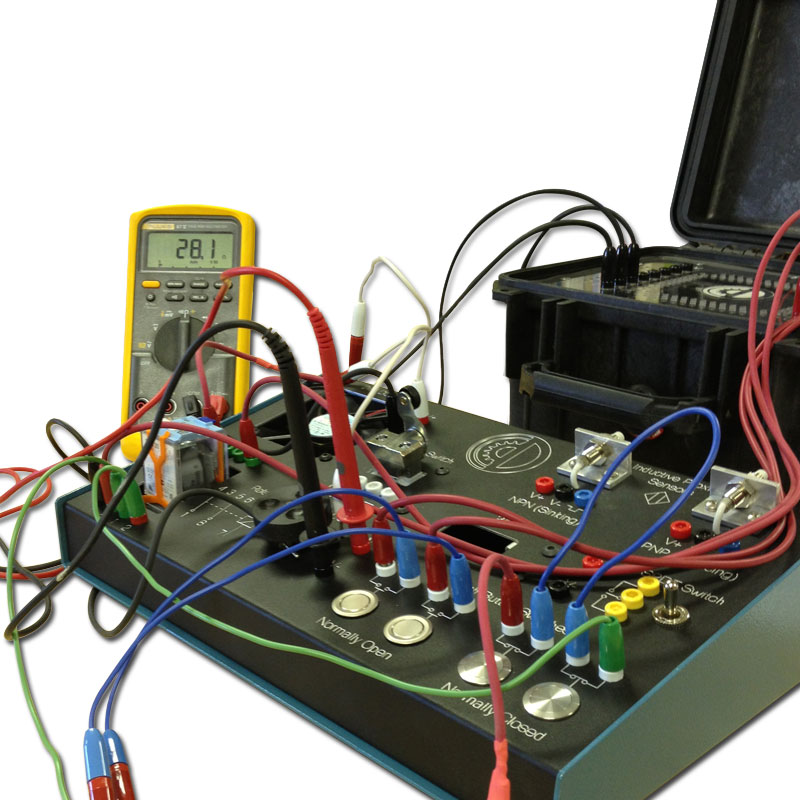Dedicated technical support for electrical industry progress.
Dedicated technical support for electrical industry progress.
Blog Article
Top Tips for Effective Electric System Troubleshooting
Fixing electric systems calls for a systematic method, grounded in a detailed understanding of electric concepts and security methods. The nuances of efficient repairing extend beyond mere technical understanding; recognizing exactly how to document searchings for and prioritize safety can substantially influence end results.
Understand the Essentials
Comprehending the essentials of electric systems is crucial for effective troubleshooting, as a strong foundation allows specialists to identify and solve problems a lot more efficiently. A thorough grasp of electrical principles, such as voltage, existing, resistance, and power, is essential in recognizing the source of issues. Voltage is the electrical possible distinction that drives present with a circuit, while resistance opposes the flow of existing, affecting the total capability of the system.
Knowledge with circuit components, including resistors, capacitors, diodes, and changes, is also extremely important. Each part plays a distinct function in circuit behavior and can influence performance when malfunctioning. In addition, comprehending collection and parallel circuit arrangements is important, as these setups affect the circulation of voltage and present within the system.
Specialists need to be mindful of possible hazards, such as shock and short circuits, to execute risk-free troubleshooting methods. By understanding these fundamental principles, technicians enhance their ability to carry out efficient diagnostics and repair services, eventually leading to enhanced efficiency and integrity of electric systems (electrical system troubleshooting).
Gather Necessary Devices
Reliable troubleshooting of electric systems calls for the ideal set of devices to identify and fix issues precisely. Crucial devices include a multimeter, which gauges voltage, present, and resistance, allowing for precise analyses of electric components.
Additionally, protected hand tools such as screwdrivers, pliers, and cord strippers are crucial for securely controling electrical links. It is also suggested to have a circuit tester available to validate the existence of voltage in outlets and cords. For more facility systems, a thermal imaging cam can help identify overheating parts, indicating potential failings.

Comply With an Organized Method
Having gathered the proper devices, the following step in troubleshooting electrical systems is to follow a methodical approach. A systematic approach ensures that specialists can recognize faults efficiently and accurately, reducing downtime and stopping unnecessary repair work.
Begin by examining the system's schematic diagrams and specifications. This entails monitoring each part systematically, starting from the power resource and working in the direction of the load.
Use screening devices, such as multimeters and oscilloscopes, to gather unbiased data concerning voltage, present, and resistance at various factors within the system. This empirical evidence will assist your troubleshooting efforts and aid to verify or eliminate prospective causes of failure.
In addition, think about ecological aspects that may affect the system's performance, such as view it now temperature level variations or wetness ingress. A thorough inspection of circuitry, connections, and find out this here parts will make sure that all opportunities are accounted for.
Paper Your Findings
Complete documentation is crucial in the fixing procedure of electrical systems. This practice not only aids in comprehending the origin cause of the issue however additionally serves as a reference for future troubleshooting efforts.

Furthermore, preserving a log of parts changed or fixings done is vital. This information supports supply monitoring and can help assess the durability and integrity of specific components.
Inevitably, the paperwork process need to be detailed yet succinct, making it possible for easy access and evaluation - electrical system troubleshooting. By prioritizing thorough paperwork, specialists can develop a useful data base that not only help in current troubleshooting yet also encourages future maintenance initiatives, thus boosting general system reliability

Prioritize Security Actions
Identifying the fundamental threats connected with electric systems is crucial for making certain safety throughout troubleshooting. Electric shock, burns, and equipment damages are simply a few of the prospective threats that technicians deal with. Focusing on safety procedures is not just a legal responsibility yet also a moral critical that safeguards both the specialist and the surrounding atmosphere.
Prior to starting any this page troubleshooting task, service technicians need to wear ideal individual protective equipment (PPE), including protected gloves, safety and security glasses, and flame-resistant apparel. Making certain that the job location is completely dry and without clutter can considerably lower the danger of mishaps. It is vital to de-energize circuits before beginning any type of work, confirming that they are not live with the use of a multimeter or voltage tester.
Developing clear communication procedures with staff member is additionally vital; this makes sure that everyone understands prospective dangers and the condition of the electrical system being dealt with. Having an emergency response strategy in location can verify indispensable in the occasion of a case. By focusing on safety measures, technicians can properly alleviate risks and foster a safer office.
Verdict
Efficient electric system repairing counts on a thorough understanding of essential concepts and a systematic strategy. By collecting important tools, sticking to systematic analysis strategies, and thoroughly recording findings, the troubleshooting procedure comes to be much more reliable and trustworthy. Prioritizing safety actions ensures the health of people included and the integrity of the electrical system. Applying these techniques will certainly enhance the repairing experience, resulting in quicker resolutions and boosted operational effectiveness in electric systems.
Report this page